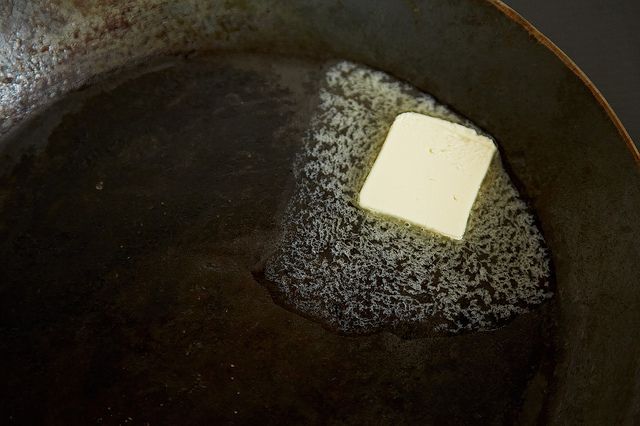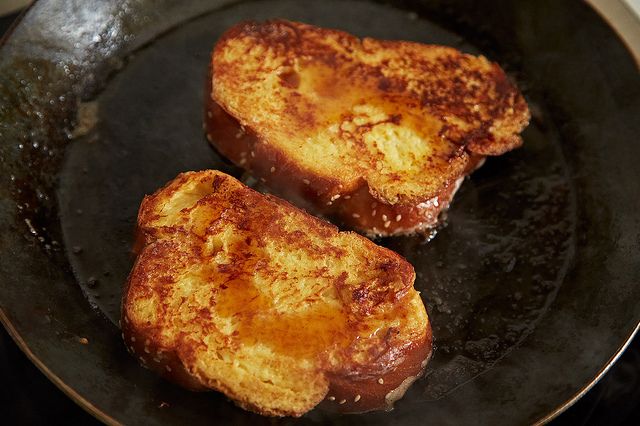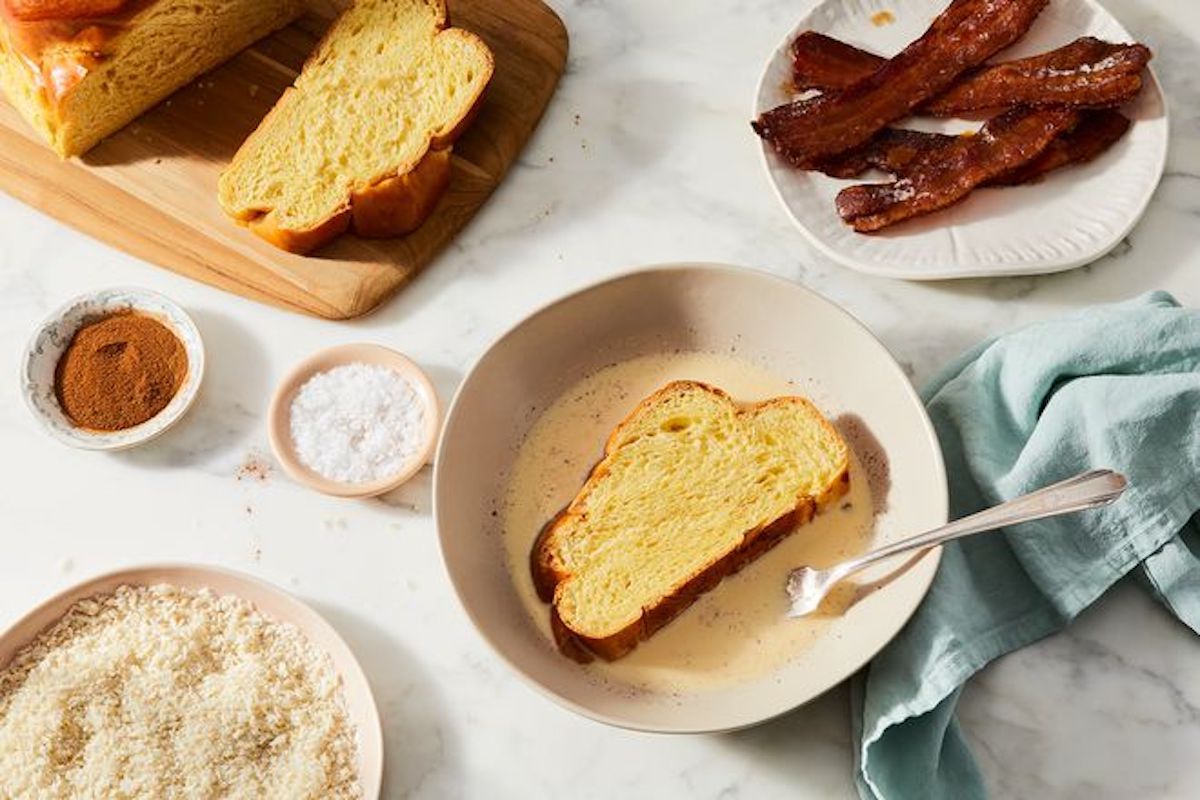It's late, you just got home, and you're hungry. You have some stale bread, some eggs, and some dairy. Or: It's Sunday morning, and your kids are shrieking, and you want to cook something quick and easy that will get them all starry-eyed, quiet, and happy. Or: You're tired of salads and roasted vegetables and even meat and fish and you want something soothing, something easy, and something decidedly un-seasonal for dinner. Good thing you know how to make French toast.
The French call it pain perdu, meaning "lost bread," but "found bread" might be more accurate. As in, you don't know what to eat, so you look around. Your humble pantry holds just a few basics: milk, eggs, and, forgotten in a cupboard, a hunk of stale bread. It's an excellent find, because with a little alchemy, you'll soon have culinary gold.
Step 1: Find bread
Can you use any bread for French toast? Yes. Old hamburger buns? Waste not, want not. White bread is perfectly fine. If you want to be fancy, use brioche or challah, but any bread will do. Croissants, rye bread, and chocolate babka are all strong contenders. Are some breads better than others? Probably, but you'll never know until you try.
Step 2: Slice bread
Or don't! Decide: Do you want a slice of French toast? Sticks? A whole pan? And how soon do you want to eat? Because the thicker the bread, the longer it will take the custard to soak through, and for your French toast to cook. Do you want French toast that's soft and gooey in the middle, or do you prefer a lighter texture? Don't want to think too hard about it? We get it. Make slices about 3/4-inch thick. If your bread is especially fresh, you'll want to dry it out a bit at this point by placing slices directly on the rack in a 400°F oven for about 10 minutes to help it absorb more of the mixture without getting too soggy to flip easily.
Step 3: Soak bread
How many slices do you want? Divide that number by two. That's the number of eggs you need. Divide that number by four. That's the number of cups of liquid, typically dairy and/or dairy substitutes. For example, two slices of bread for classic French toast require one egg and about 1/4 cup of milk.

Mix these ingredients thoroughly. If you want to add any bells and whistles, like spices, sugar, booze, citrus zest, or flavor extracts, now is the time. Dip the bread and let the it soak for as long as it takes to soften, but not so long that it falls apart. This length of time will vary with the type of bread, how dry it is, and its thickness. Thick, dense, dry slices will take longer to soften than thin, light, moist slices — so plan accordingly.
You can also coat or stuff your French toast, if you like. If you're looking to get a little fancy, give you French toast a crunchy coating, or a sweet or savory filling.

Step 4: Cook the French toast
Cooking French toast is all about setting the custard, which starts to happen around 160°F. On your way there, you're looking to caramelize the exterior to the ideal golden brown, keeping an eye out for any burning (which can happen quickly).
To achieve this balance, use a skillet or griddle over medium heat, greased with a little neutral oil or butter. You can also use an oven, or even a deep-fryer. If your slices are very thick, you may want to use a thermometer to check the center temperature of the French toast to make sure it's done. For standard 3/4-inch slices, griddling for about three minutes per side is a good rule of thumb.

If you're cooking French toast in batches and need to keep the first slices warm while you cook the others, lay them on a baking sheet and hold them in a 200°F oven until ready to serve.
Step 4: Add Toppings
When your custard is set and the French toast is nicely browned, it's time to serve. This is your last chance to dress up your French toast before you take it down. On the sweet side, the most popular toppings are powdered sugar, butter, maple syrup, fruit, whipped cream, and so on.

For a more savory take, try topping your French toast with cheese, or even avocado and kimchi.


Shares